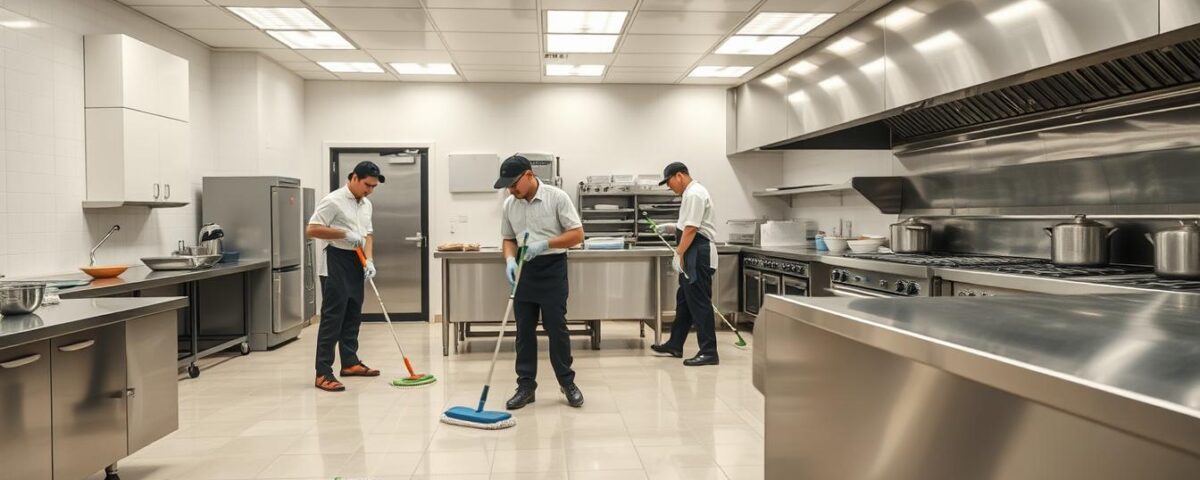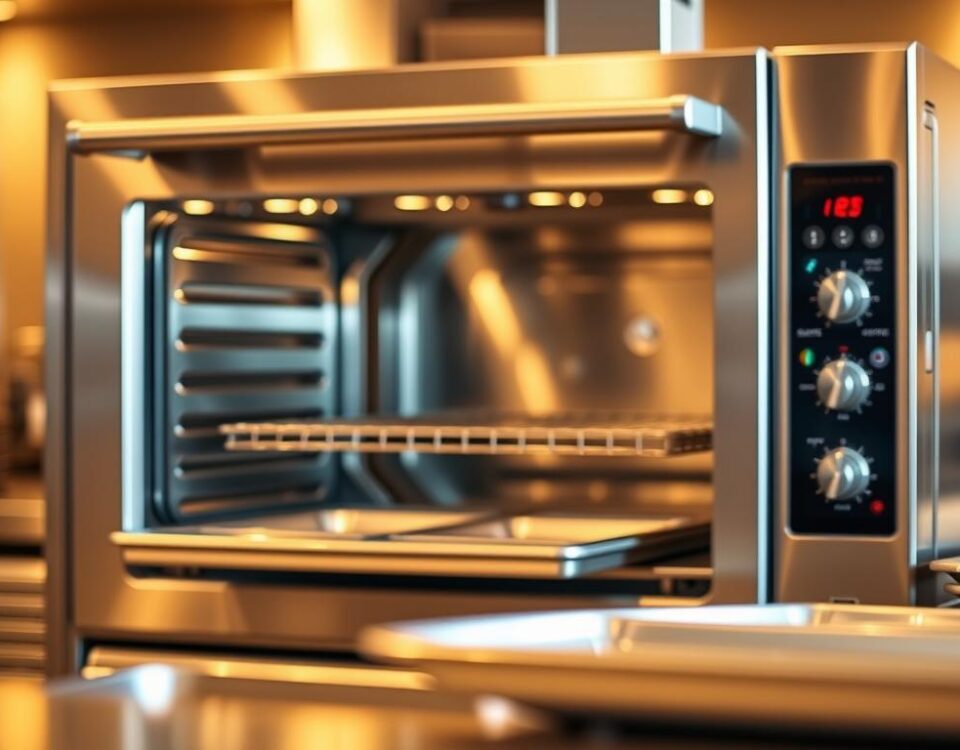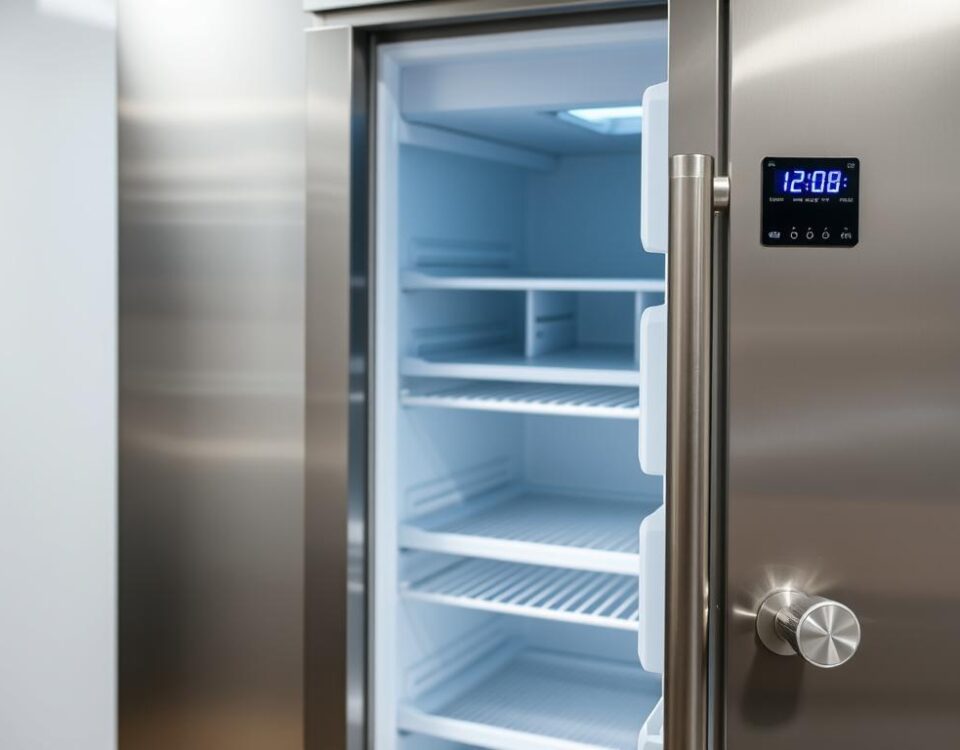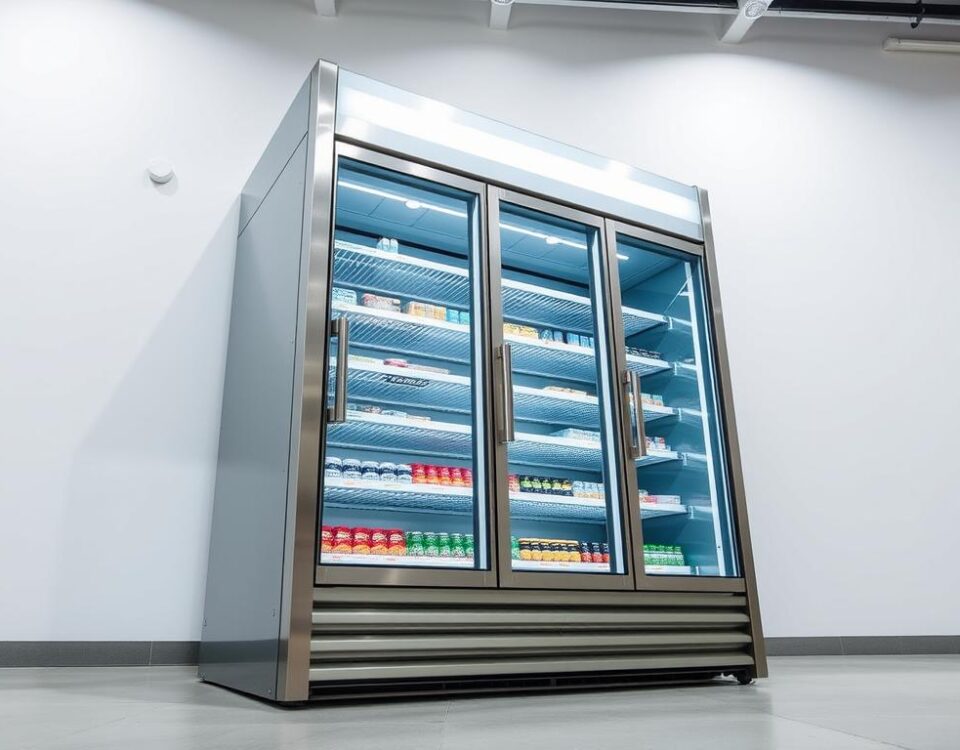
The Only Food Cost Formula You’ll Ever Need to Price Dishes for Profit
July 3, 2025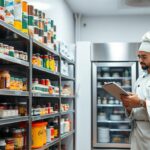
6 Inventory Hacks That Save Restaurants Thousands Every Month
July 4, 2025I still remember the day a health inspector shut down our restaurant due to a dirty kitchen. The loss was not just financial; it was a hit to our reputation. Did you know that a significant number of restaurant closures are due to food safety violations?
Maintaining a spotless kitchen is not just about avoiding closures; it’s about ensuring the safety of your customers and staff. A comprehensive cleaning checklist is essential for kitchen managers to prevent cross-contamination and comply with health regulations.
By following a practical and implementable cleaning schedule, you can extend equipment life, improve kitchen efficiency, and enhance food quality. So, what does it take to pass every inspection with flying colors?
Key Takeaways
- A clean kitchen is crucial for food safety and passing health inspections.
- A comprehensive cleaning checklist helps kitchen staff stay on top of cleaning tasks.
- Proper cleaning protocols prevent cross-contamination and reduce foodborne illness risks.
- Breaking down cleaning tasks into daily, weekly, and monthly routines makes the task manageable.
- Following the checklist can extend equipment life and improve kitchen efficiency.
Why Commercial Kitchen Cleanliness Matters
The cleanliness of a commercial kitchen plays a significant role in ensuring food safety and compliance with health regulations. A clean kitchen environment is crucial for preventing the spread of harmful bacteria and other contaminants that can cause foodborne illnesses.
Food Safety and Cross-Contamination Prevention
Food safety is a top priority in any commercial kitchen. Cross-contamination can occur when bacteria or other contaminants are transferred from one food or surface to another. This can happen through improper handling, inadequate cleaning, or insufficient sanitizing. To prevent cross-contamination, it’s essential to maintain a clean and organized kitchen, with regular cleaning schedules and proper training for staff.
Compliance with Health Department Regulations
Health department regulations vary by state and local jurisdiction, but they all share the common goal of ensuring public health and safety. To comply with these regulations, commercial kitchens must adhere to strict cleaning and sanitizing protocols. This includes regular health inspections, which can be scheduled or surprise visits. Failing these inspections can result in fines, mandatory closures, and damage to a restaurant’s reputation. By following a comprehensive cleaning checklist, restaurants can ensure they are meeting or exceeding health department standards.
To stay compliant, it’s also important to keep detailed records of cleaning tasks and to stay updated on any changes to health department regulations. This proactive approach not only helps in passing health inspections but also contributes to a safe and healthy environment for customers and staff.
Essential Cleaning Supplies for Your Commercial Kitchen
Effective cleaning in a commercial kitchen setting requires a thoughtful selection of supplies and equipment. Having the right tools and chemicals on hand is crucial for maintaining a clean and safe environment for food preparation.
Cleaning Tools and Equipment
The foundation of a clean commercial kitchen lies in its cleaning tools and equipment. Essential items include scrubbers, brushes, mops, and microfiber cloths. These tools are vital for removing grease, food residue, and dirt from various surfaces.
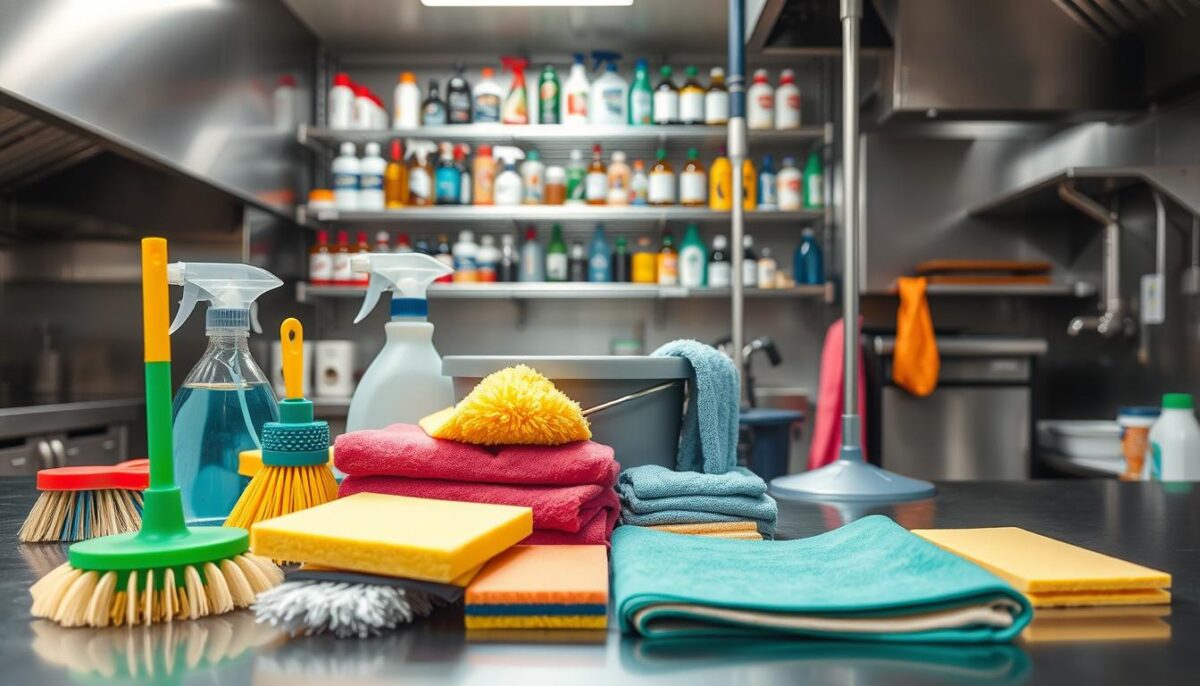
Cleaning Solutions and Chemicals
The right cleaning solutions and chemicals are just as important as the tools used to apply them. A commercial kitchen requires a variety of cleaning products, including degreasing sprays, disinfectant sprays, surface cleaners, and commercial floor cleaning solutions. For areas with heavy grease buildup, such as range hoods, fryers, and grills, using a food-safe degreaser is crucial. Additionally, sanitizing solutions must be used at the correct dilution ratios to effectively kill pathogens without leaving harmful residues.
It’s also important to have specialized cleaners for different materials, such as stainless steel cleaners and glass cleaners. Proper rinsing after using cleaning chemicals on food contact surfaces is necessary to prevent chemical contamination of food. Furthermore, understanding and following the guidelines on chemical safety data sheets (SDS) ensures safe handling and storage of these chemicals, contributing to a safe commercial cleaning practice.
Daily Commercial Kitchen Cleaning Checklist
A well-structured daily cleaning schedule helps in maintaining the overall hygiene and efficiency of your commercial kitchen. This daily routine is crucial for ensuring that your kitchen remains compliant with health and safety regulations.
Food Preparation Areas and Surfaces
Cleaning and sanitizing food preparation areas and surfaces is a top priority. This includes countertops, cutting boards, and any other surfaces that come into contact with food. Use a food-safe cleaning solution and follow a strict sanitizing protocol to prevent cross-contamination.
Cooking Equipment and Appliances
All cooking equipment and appliances must be cleaned daily. This includes ovens, stoves, fryers, and any other equipment used in food preparation. Regular cleaning prevents the buildup of grease and food residue, which can become a fire hazard.
Sinks, Drains, and Dishwashing Areas
Sinks, drains, and dishwashing areas are breeding grounds for bacteria and must be cleaned and sanitized daily. Ensure that all drains are clear and functioning properly to prevent backups and odors.
Floors and Floor Mats
Floors and floor mats in the kitchen are prone to dirt and moisture, making them slippery and hazardous. Clean and sanitize these areas daily, paying extra attention to high-traffic zones.
Waste Disposal Areas
Proper management of waste disposal areas is critical. This includes taking out the garbage and sanitizing recycling containers. Ensure that waste bins are emptied regularly and that the areas around them are kept clean and clear.
| Area | Daily Cleaning Tasks |
|---|---|
| Food Preparation Areas | Clean and sanitize surfaces |
| Cooking Equipment | Clean equipment and appliances |
| Sinks and Drains | Clean and sanitize sinks and drains |
| Floors and Mats | Clean and sanitize floors and mats |
| Waste Disposal | Empty trash, sanitize recycling containers |
Weekly Commercial Kitchen Cleaning Tasks
A weekly deep cleaning schedule is essential for maintaining a hygienic and efficient commercial kitchen environment. While daily cleaning is crucial, certain areas and equipment require more thorough attention on a weekly basis to prevent the buildup of grime, bacteria, and other contaminants.
Deep Cleaning Ovens and Cooking Equipment
Deep cleaning ovens and cooking equipment is a critical weekly task. This involves not just wiping down surfaces but using appropriate cleaning solutions to remove stubborn food residue and grime. For ovens, this may involve using a self-cleaning cycle or specialized oven cleaners. Other cooking equipment, such as grills and fryers, also need thorough cleaning to maintain their performance and hygiene.
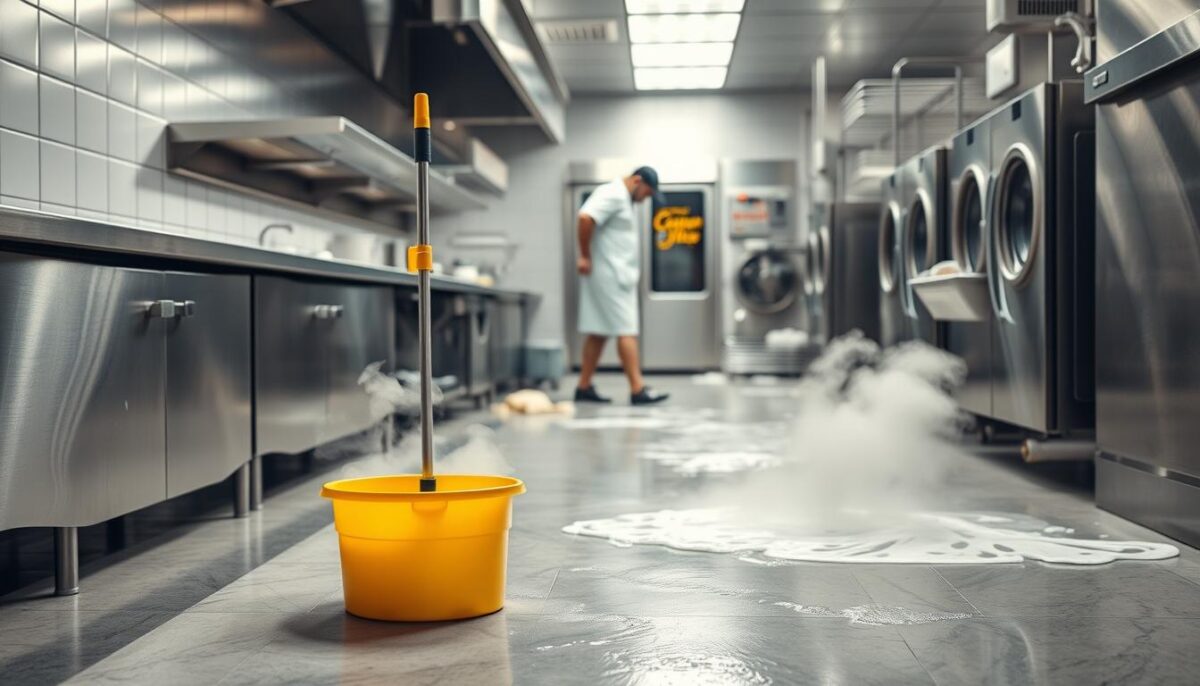
Refrigerators and Freezers
Refrigerators and freezers require weekly attention to ensure they remain clean and free of contamination. This involves wiping down shelves, checking expiration dates of stored food, and cleaning any spills or leaks. It’s also essential to check the temperature settings to ensure they are within safe ranges. Regular cleaning helps prevent cross-contamination and keeps food fresh.
Walls, Doors, and Hard-to-Reach Areas
Walls, doors, and hard-to-reach areas can easily become neglected but are breeding grounds for bacteria and grime. Weekly cleaning of these areas helps maintain overall kitchen hygiene. Use appropriate cleaning tools to reach high areas and ensure all surfaces are clean and sanitized.
Grease Traps and Filters
Grease traps and filters are critical components of a commercial kitchen’s plumbing and ventilation systems. Cleaning grease traps weekly is vital to prevent clogs and foul odors. It’s also important to clean exhaust hood filters regularly to ensure proper ventilation and prevent grease buildup, which can be a fire hazard. Proper disposal of collected grease according to local regulations is also crucial.
By incorporating these weekly cleaning tasks into your commercial kitchen’s maintenance routine, you can ensure a cleaner, safer, and more efficient environment for food preparation. Regular maintenance not only prevents immediate issues like clogs and bad odors but also prolongs the lifespan of equipment and plumbing systems.
Monthly Deep Cleaning Procedures
Maintaining a clean commercial kitchen involves more than daily and weekly tasks; it requires a thorough monthly deep cleaning. This comprehensive approach ensures that all aspects of the kitchen are addressed, maintaining a safe and healthy environment for food preparation.
Ventilation Systems and Hood Cleaning
One critical aspect of monthly deep cleaning is the thorough cleaning of ventilation systems and hoods. Grease buildup in these areas can lead to fires and compromise air quality. It’s essential to follow a detailed procedure to clean the hood, filters, and ducts, ensuring that all grease and debris are removed. As noted by a fire safety expert, “
Regular cleaning of kitchen ventilation systems is crucial for preventing fires and maintaining a safe kitchen environment.
Behind and Under Heavy Equipment
Deep cleaning behind and under heavy equipment is another vital task. Dust, dirt, and food particles can accumulate in these areas, attracting pests and creating unsanitary conditions. Moving equipment away from walls and thoroughly cleaning the floors and surrounding areas helps prevent these issues. Regularly cleaning under equipment like ovens and refrigerators can also help in maintaining their efficiency and longevity.
Storage Areas and Shelving
Storage areas and shelving units in commercial kitchens can become cluttered and dusty over time. Monthly deep cleaning involves removing all items from shelves, wiping down the surfaces with appropriate cleaning solutions, and reorganizing the items. This process helps in identifying any expired or spoiled food items and prevents pest infestations. Ensuring that storage areas are clean and well-organized is key to maintaining a sanitary kitchen.
Ice Machines and Water Lines
Cleaning and sanitizing ice machines and their associated water lines is crucial for preventing the growth of mold, slime, and bacteria. Following the manufacturer’s instructions, one should remove and discard all ice, disassemble removable parts, and use approved cleaners to sanitize the machine. Additionally, daily cleaning and sanitizing of ice scoops and bins are necessary to prevent cross-contamination. As emphasized by health experts, regular maintenance of ice machines not only improves safety but also extends equipment life and maintains production capacity.
By incorporating these monthly deep cleaning procedures into your kitchen’s maintenance routine, you can ensure a cleaner, safer, and more compliant commercial kitchen environment.
How to Implement Your Commercial Kitchen Cleaning Checklist
The key to a spotless commercial kitchen lies in the effective implementation of your cleaning checklist, ensuring compliance and customer satisfaction. A well-structured cleaning checklist is essential for maintaining a clean and compliant kitchen environment.
Creating a Cleaning Schedule
To implement your cleaning checklist effectively, start by creating a comprehensive cleaning schedule. This schedule should outline daily, weekly, and monthly tasks, ensuring that all areas of the kitchen are regularly cleaned and maintained. By doing so, you can standardize a compliant cleaning process and ensure key areas are cleaned regularly.
Assigning Responsibilities to Staff
Assigning specific cleaning tasks to staff members is crucial for maintaining accountability and ensuring that all cleaning duties are completed. By clearly defining responsibilities, you can improve food safety, help new employees contribute effectively, and reduce the risk of missed cleaning tasks, even during busy shifts.
Tracking Completion and Accountability
Tracking the completion of cleaning tasks is vital for maintaining consistent standards throughout your restaurant operation. Implementing sign-off procedures for completed tasks, whether through paper checklist or digital apps, helps hold employees accountable for assigned tasks. Regular management inspections verify that cleaning tasks are being completed properly, not just checked off the list.
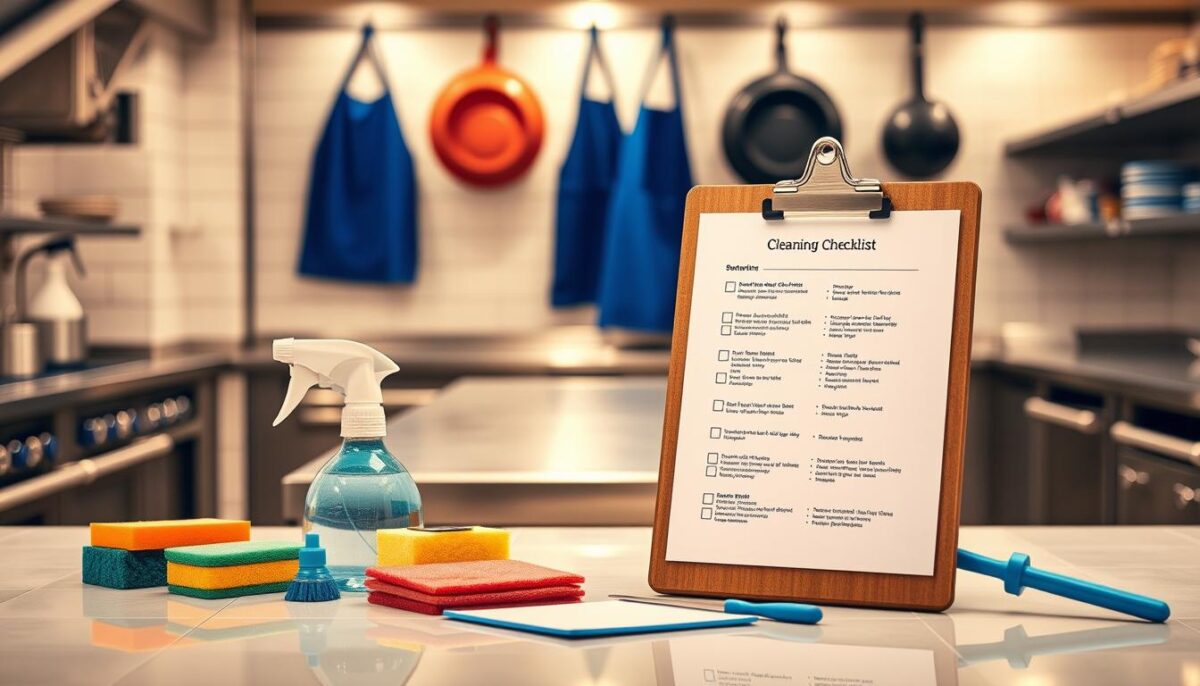
By documenting cleaning records, you can serve as valuable evidence during health inspections and in the event of customer complaints. Recognizing and rewarding consistent compliance with cleaning standards motivates staff and reinforces the importance of these tasks.
Common Health Inspection Issues and How to Avoid Them
To pass a health inspection with flying colors, it’s essential to know what inspectors are looking for and address potential issues proactively. Health inspectors visit restaurants one or more times per year, and being prepared is key to avoiding common pitfalls.
Temperature Control and Food Storage
One of the critical areas inspectors focus on is temperature control and food storage. Ensuring that your kitchen maintains proper temperatures for food storage and preparation is vital. This includes regular checks on refrigeration units and maintaining accurate temperature logs. Proper temperature control prevents bacterial growth and foodborne illnesses.
Personal Hygiene and Handwashing
Inspectors also pay close attention to personal hygiene practices, particularly handwashing. Ensuring that staff follows proper handwashing procedures and maintains good personal hygiene is crucial. This includes providing adequate handwashing facilities and enforcing strict handwashing protocols. Good hand hygiene is a cornerstone of food safety.
| Handwashing Step | Recommended Practice |
|---|---|
| Water Temperature | Warm water (at least 100°F) |
| Soap Usage | Use soap and rub hands together |
| Drying Hands | Use a clean towel or air dryer |
Documentation and Record Keeping
Proper documentation and record keeping are essential for demonstrating compliance with health codes and food safety regulations. Maintaining accurate records of cleaning schedules, temperature checks, employee training, and pest control services can significantly reduce inspection time and demonstrate your commitment to food safety. Organized records are key to a smooth inspection process.
By focusing on these critical areas and maintaining meticulous records, you can avoid common health inspection issues and ensure your commercial kitchen remains compliant with health regulations. Regularly reviewing and updating your cleaning checklist will also help in maintaining high standards of cleanliness and food safety.
Tips for Passing Health Inspections with Flying Colors
Passing a health inspection with flying colors requires a combination of knowledge and practice. To achieve this, it’s essential to understand the inspection process and be prepared.
Pre-Inspection Self-Assessment
Before the actual inspection, conducting a self-assessment is crucial. This involves reviewing your kitchen’s cleaning and sanitation practices, checking for any potential issues, and addressing them promptly. A thorough self-assessment helps identify areas that need improvement, ensuring you’re better prepared for the inspection.
- Review cleaning schedules and ensure they are being followed.
- Check food storage and handling practices.
- Verify that all staff members are aware of and follow proper hygiene practices.
What to Do During an Actual Inspection
During the inspection, it’s vital to be cooperative and transparent. Ensure that a designated person, typically a manager or owner, accompanies the inspector throughout the visit to answer questions and address concerns immediately.
| Action | Benefit |
|---|---|
| Respond promptly to identified violations. | Demonstrates commitment to food safety. |
| Ask questions to clarify concerns. | Ensures understanding of regulations and best practices. |
| Take notes during the inspection. | Helps in addressing feedback and implementing corrective actions. |
By being prepared and cooperative during the inspection, you can demonstrate your commitment to maintaining a clean and safe kitchen environment.
Conclusion: The Benefits of a Clean Commercial Kitchen
A well-maintained commercial kitchen is vital for delivering high-quality food, ensuring customer safety, and upholding the reputation of your business. By implementing a comprehensive cleaning program, you standardize a compliant process, improve food safety, and reduce the risk of missed tasks. This not only enhances operational efficiency but also contributes to staff morale and retention.
Consistently passing health inspections with high ratings can become a marketing advantage, building customer confidence and differentiating your business. I encourage you to start implementing these cleaning protocols immediately, even if it’s in small steps, to invest in your business’s long-term success and sustainability.
FAQ
How often should I clean my grease traps?
I recommend cleaning your grease traps at least once a month, or more frequently if you have a high-volume cooking operation. This will help prevent clogs and ensure compliance with health regulations.
What’s the best way to sanitize my cutting boards?
To sanitize my cutting boards, I use a solution of 1 tablespoon of unscented chlorine bleach in 1 gallon of water. I let the boards soak for at least 1 minute before rinsing them thoroughly.
How can I prevent dust and debris from accumulating in my storage areas?
To keep my storage areas clean, I make sure to label and date all stored items, and I rotate stock regularly. I also use shelving units with easy-to-clean surfaces and ensure that all containers are sealed and pest-proof.
What’s the proper way to clean my ovens and cooking equipment?
I follow the manufacturer’s instructions for cleaning my ovens and cooking equipment. Typically, this involves using a gentle cleanser and a soft-bristled brush to remove food residue, followed by a thorough rinse.
How often should I inspect my ventilation systems and hoods?
I inspect my ventilation systems and hoods monthly to ensure they’re free from grease and debris. I also schedule a professional cleaning at least twice a year to maintain optimal performance.
What’s the best way to maintain a clean and safe floor?
To keep my floors clean and safe, I sweep and mop them daily, and I use a degreaser to remove any stubborn stains. I also ensure that my floor mats are cleaned and sanitized regularly.
How can I ensure my staff is following the cleaning schedule?
To ensure my staff is following the cleaning schedule, I create a clear and concise schedule and assign specific tasks to each team member. I also track completion and provide feedback to ensure accountability.
